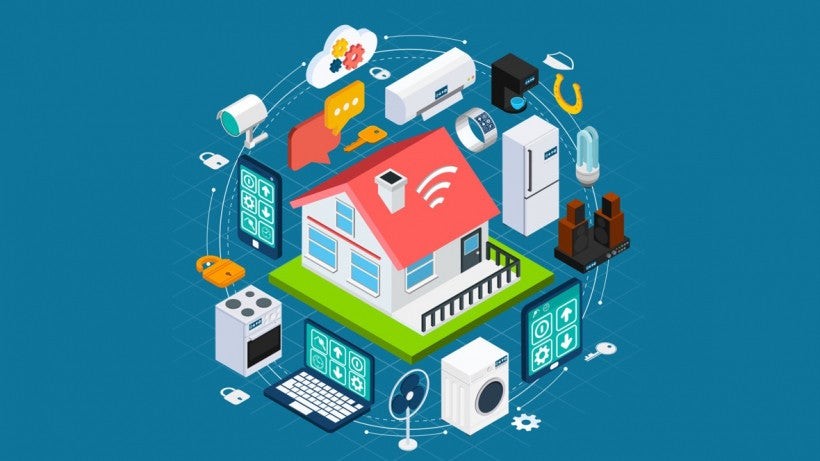The concept of a “smart home” has evolved rapidly from a futuristic luxury to an increasingly accessible and practical reality. Far from just a collection of gadgets, a truly smart home offers convenience, efficiency, security, and even peace of mind, all orchestrated through intuitive control. For many, the idea of transforming their living space into an interconnected ecosystem of devices might seem daunting, conjuring images of complex wiring and endless configurations. However, building your first smart home is a much more approachable endeavor than one might imagine, especially when approached with a clear strategy and an understanding of the foundational elements. This guide aims to demystify the process, offering a clear path for beginners to embark on their smart home journey.
The initial step in creating a smart home environment is to define your primary motivations and desired outcomes. Are you looking to enhance security, reduce energy consumption, simplify daily routines, or perhaps all of the above? Identifying your priorities will help you select the most relevant devices and prevent unnecessary purchases. For instance, if energy efficiency is your top concern, smart thermostats and smart lighting will likely be at the forefront of your initial investments. Conversely, if peace of mind regarding safety is paramount, smart door locks, security cameras, and motion sensors will take precedence. A clear vision acts as your compass, guiding your choices in a vast and sometimes overwhelming market.
Once you have a clear idea of your goals, the next crucial decision involves choosing a central smart home platform or ecosystem. This platform serves as the brain of your smart home, enabling different devices from various manufacturers to communicate and work together seamlessly. Major players in this space include Amazon Alexa, Google Home, Apple HomeKit, and Samsung SmartThings. Each offers unique strengths and compatibility lists. For example, if you’re heavily invested in Amazon’s ecosystem with Echo devices, Alexa might be the most natural fit. Similarly, Apple users might find HomeKit’s integration with iOS devices particularly appealing. It’s important to research the compatibility of devices with your chosen platform to ensure smooth operation and avoid isolated gadgets that can’t communicate with one another. Committing to a platform early on simplifies future expansion and ensures a cohesive smart home experience.
With a platform in mind, you can begin to acquire your foundational smart devices. A common starting point for many homeowners is smart lighting. These intelligent bulbs or switches allow you to control lights remotely, set schedules, adjust brightness and color, and even create scenes for different moods or activities. Beyond the convenience, smart lighting can contribute to energy savings by ensuring lights aren’t left on unnecessarily. Another highly popular and impactful initial investment is a smart thermostat. Devices like the Nest Learning Thermostat or Ecobee SmartThermostat with Voice Control learn your preferences and daily routines, automatically adjusting temperatures to optimize comfort and reduce energy consumption. These devices often integrate seamlessly with your chosen smart home platform, allowing for voice control or remote adjustments via a smartphone app.
For those prioritizing security, smart door locks and security cameras offer significant peace of mind. Smart locks allow you to lock and unlock your doors remotely, grant temporary access to visitors, and receive notifications when someone enters or leaves your home. Security cameras, both indoor and outdoor, provide live video feeds, motion detection alerts, and often two-way audio communication, allowing you to monitor your property from anywhere in the world. Integrating these devices into your smart home system means they can interact with other components; for example, a smart lock could trigger lights to turn on when you unlock the door, or a security camera could activate an alarm if motion is detected when you’re away.
As you expand your smart home, consider devices that enhance convenience and automate routine tasks. Smart plugs are incredibly versatile and allow you to turn almost any “dumb” appliance into a smart one. Plug in a lamp, a coffee maker, or a fan, and you can then control it with your voice or through an app, set schedules, or even integrate it into automated routines. Smart speakers, such as Amazon Echo or Google Nest devices, are not just for playing music; they act as the voice interface for your entire smart home, allowing you to control devices with simple commands, get weather updates, manage calendars, and much more.
The true power of a smart home lies in its ability to automate. Once you have several smart devices, explore the “routines” or “automations” features within your chosen platform. These allow you to set up sequences of actions based on triggers. For example, you could create a “Good Morning” routine that slowly brightens your lights, starts the coffee maker, and gives you a weather update when your alarm goes off. A “Leaving Home” routine could automatically lock your doors, turn off all lights, and adjust the thermostat to an energy-saving mode. These automations simplify daily life and deliver on the promise of a truly intelligent home.
Throughout this process, remember that building a smart home is an iterative journey, not a one-time installation. Start small, understand how each component works, and then gradually expand your system based on your evolving needs and preferences. While the initial setup might require some learning, the long-term benefits in terms of convenience, efficiency, and security make the investment worthwhile. By taking a thoughtful approach, even a beginner can successfully transform their living space into a connected, responsive, and truly smart home.





